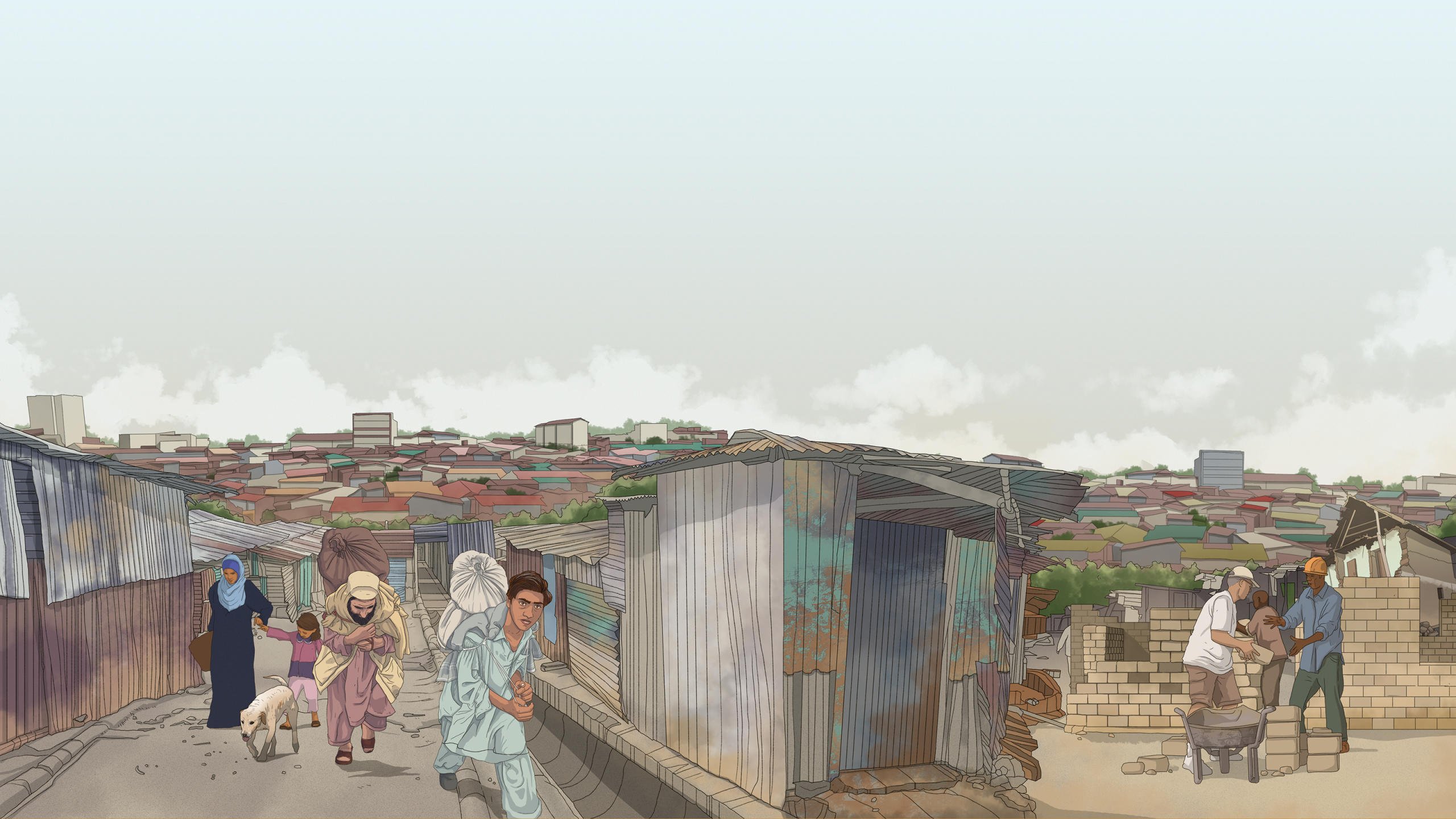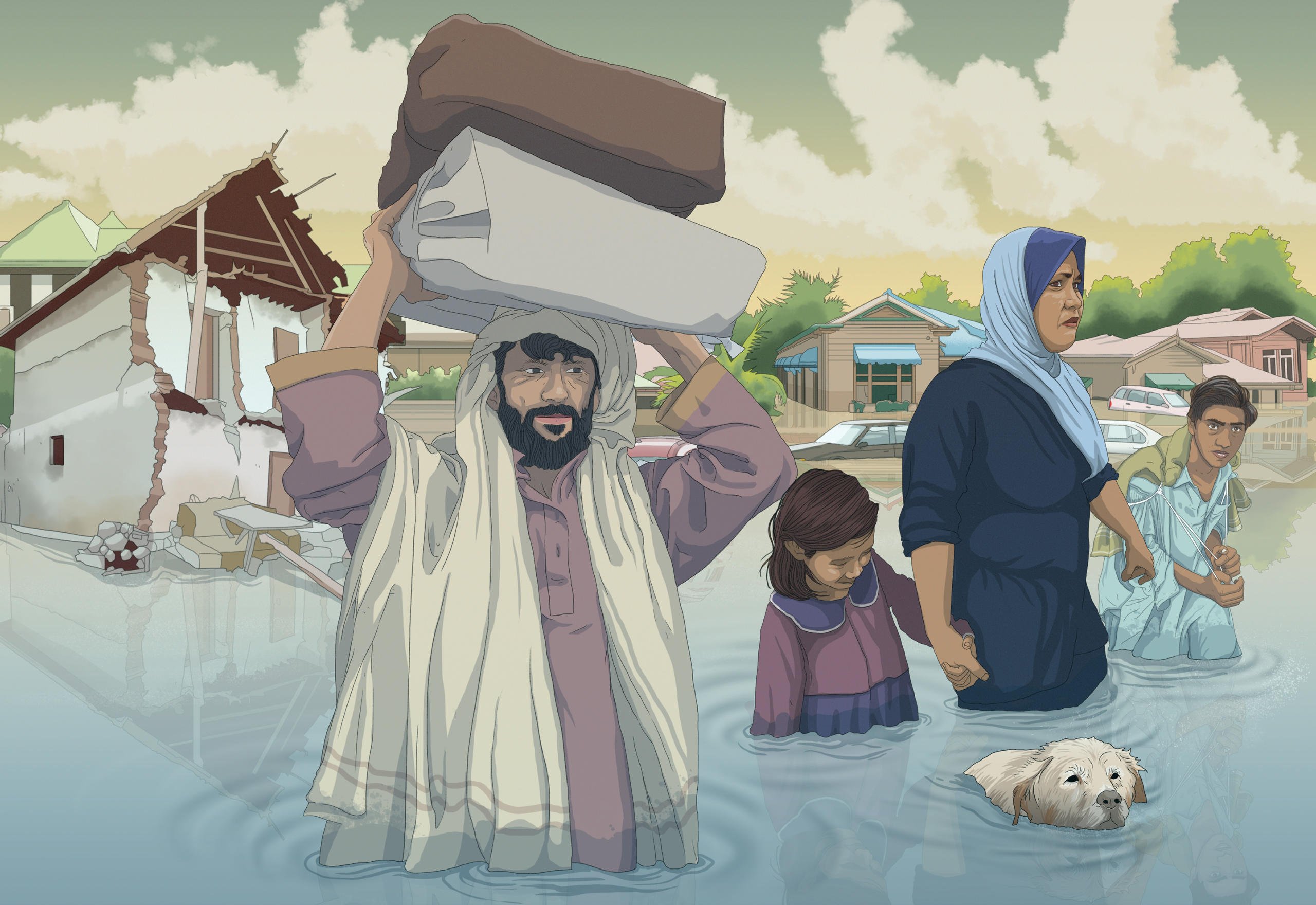We need to change the way we think. Disasters should no longer be perceived as ‘natural’ events, where nature strikes beyond the control of man, but rather as something on which we can exert influence, prevent and prepare for. It is high time the international community pulls its head out of the sand. It is time to act.
25 years have passed since the Intergovernmental Panel on Climate Change (IPCC) stated – in their First Assessment Report in 1990 – that the gravest effect of climate change might be on human mobility. Now we know they were right.
Every year, on average, more than 26 million people are displaced by disasters, and the trend is increasing. Adjusted for population growth, the risk of becoming displaced by a disaster has doubled since the 1970s. People in Asia are most at risk of being displaced, as they have the highest numbers of vulnerable populations exposed to multiple natural hazards.
In addition, unknown numbers are displaced by changes to the physical environment, evolving progressively over time – so called slow-onset disasters. For instance, in parts of Kenya, Ethiopia and Somalia, pastoralists are at risk of becoming permanently displaced by recurring and increasingly severe droughts.
“We need to reverse this trend while it is still possible,” says Nina M. Birkeland, Senior Adviser on Disaster and Climate Change in the Norwegian Refugee Council.
We need to reverse this trend while it is still possible.NINA M. BIRKELAND, Senior Adviser on Disaster and Climate Change in the Norwegian Refugee Council
Mitigation and adaptation
We have yet far to go. As the world came to grips with what we were facing, the issue of displacement was for a long time not even part of the discussion.
To begin with, all focus was on mitigation – how to stem the tide of climate change by cutting emissions. As it became increasingly clear that the effects of climate change were already felt around the world, worsening by the year, the issue of adaptation became equally important – enabling affected societies to better withstand what is inevitable, despite our best efforts to cut emissions.
Adaptation came on the agenda for real during the negotiations between the parties to the UN Framework Convention on Climate Change (UNFCCC) in Bali in 2007.
Reluctance
The developing world bears the brunt of climate change, while the industrialised world has contributed most of the climate-altering emissions. To put it simply, adaptation negotiations have thus spun around how much rich countries should pay poor countries to deal with the damages.
"The reluctance to include yet another adaptation issue – that adds to the rich countries' bill – has been a major obstacle to getting displacement included on the adaptation agenda, says Birkeland.
As a result, it was not until the 2010-negotiations in Cancun that displacement was addressed as an adaptation issue. The parties to the convention agreed to assess the impact of climate change and disasters on human mobility and to plan accordingly.
The reluctance to include yet another adaptation issue – that adds to the rich countries’ bill – has been a major obstacle to getting displacement included on the adaptation agenda.NINA M. BIRKELAND
A social issue
Five years on, addressing disaster displacement has become something much more than ‘simply’ mitigate and adapt to the inevitable effects of climate change – as awareness has emerged that climate change in itself is only one of several drivers of climate and disaster-related displacement.
“We need to address disasters as primarily social and political, rather than ‘natural’ phenomena”, says Alexandra Bilak, Head of Policy and Research at NRC’s Internal Displacement Monitoring Centre (IDMC) in Geneva.
Since 2008, IDMC has monitored and compiled data on displacement in the wake of sudden, onset disasters, which is presented in its annual report Global Estimates – People Displaced by Disasters.
IDMC has identified four drivers of disaster related displacement – in addition to climate change: Population growth in hazard-prone areas, rapid and unplanned urbanisation, weak governance and poverty.
“Because of these factors, more people risk being displaced today than ever before,” explains Bilak, adding that disasters can and should be prevented and prepared for.
“Now more than ever is the time for governments to adopt national, regional and global plans to address these main drivers of disaster displacement. It is time this knowledge is translated into action”, adds Nina M. Birkeland.

Time to act
In 2015, several major international policy processes are culminating – setting the pace for decades to come. The opportunity is unprecedented.
In March, 187 countries endorsed the Sendai Framework for Disaster Risk Reduction 2015-2030 – staking out the course for how the world should identify risks, implement measures and thus reduce the impact on people’s lives when disasters strikes.
In September, the UN will adopt new Sustainable Development Goals – defining targets to be met by 2030. The new goals will replace the Millennium Development Goals, which have guided efforts since 2000.
In December, the parties to the global climate convention meet again in Paris for the COP21 summit – to negotiate a new legally binding climate agreement, which includes adaptation measures.
In May next year, the first ever World Humanitarian Summit will convene in Istanbul, to “set an agenda for change to make humanitarian action fit for the great challenges we face now and in the future”.
Crucial decade
Given the magnitude of the problems that are in front of us, one policy alone will not solve everything.
“We need to ensure that all these global policy processes pull together to address the various drivers of disaster-related displacement,” says Alexandra Bilak.
Although stressing the importance of commitment on an international level, she is clear about one thing: “It will amount to nothing if what has been agreed is not translated into actual policies at the national and local level. The next 10 to 15 years will be crucial in determining whether a reversal of this displacement trend is possible.”


